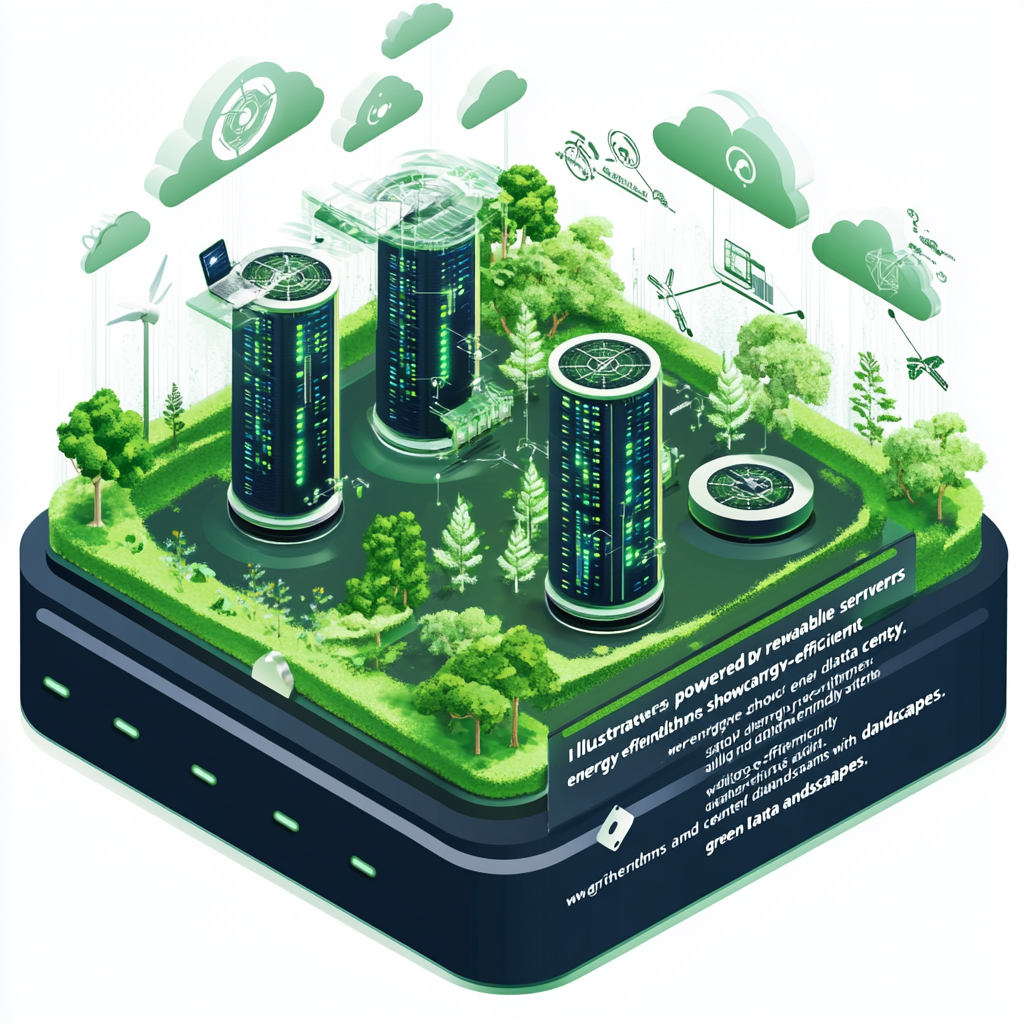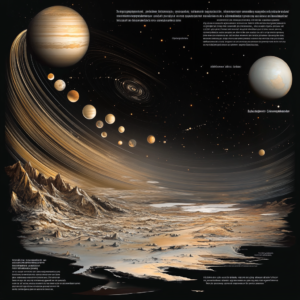
“Sustainable Intelligence: Balancing AI and Ecology”
In the unpredictable whirlwind of our contemporary age, artificial intelligence (AI) has seemingly catapulted itself from the pages of sci-fi novels to genuine reality. It’s as if the world, filled with vast possibilities and digital landscapes, has decided to hand us the keys to a Ferrari but forgot to mention that the road might be riddled with potholes. One glaring concern that's come into the spotlight is: how do we ensure that AI doesn't turn into the villain of an environmental catastrophe? Yes, folks, the dark cloud hanging over our high-tech ambitions is real – and it’s made up of emissions, resource exploitation, and some rather alarming energy bills.
Buckle up, because we’re about to dive headfirst into the murky waters threatening to drown our beautiful planet beneath a deluge of data.
The Environmental Cost of AI
Let’s rip the Band-Aid off right from the start: AI is not infallible, and it carries a hefty environmental price tag. Behind its slick facade and promises of progress lies a grim reality—one that not only encompasses energy-sucking algorithms but also intrinsic challenges we must address to avoid a Tech Apocalypse. So, what exactly are these environmental ramifications? Let’s dig in.
Energy Consumption and Greenhouse Gas Emissions
It’s hard to deny that the brain behind AI—the model—requires some serious juice. We’re talking about towering structure loads of energy that could easily be compared to the consumption of small countries. In fact, training a single large language model sends a plume of carbon dioxide into the atmosphere equivalent to the lifetime emissions of several cars. Yes, you read that right—one AI model could be chugging along in the background while you blissfully scroll your phone, all the while contributing to climate change faster than you can say “blockchain.”
Imagine this: you’re sitting in your living room, and your charmingly oblivious AI has caused more environmental damage than your entire household over a year. Yikes! The process of squeezing a smart and knowledgeable AI out of data inevitably leads to energy storms, where not only does the model consume vast amounts of electricity, but also produces a staggering amount of greenhouse gases. And let’s not forget the delightful bonus of evaporating freshwater needed to keep these data centers cool—a twist that certainly doesn’t help with our water scarcity woes.
Resource Extraction and Data Storage
If that wasn’t alarming enough, consider the lifecycle of AI itself. Picture a massive, behemoth machine where every step—raw material extraction, infrastructure manufacturing, and extensive data storage—leads us down the rabbit hole of environmental degradation. It’s as if we’re stuck in an Alice in Wonderland scenario where every resource extraction takes us deeper into a hole we can't escape.
The data centers, which serve as the beating heart of AI, are voracious energy devourers. Their consumption is so immense that it's comparable to the notorious airline industry in terms of greenhouse gas emissions. Think of it this way: every time you store your selfies in the cloud or save that heated argument in a group chat, remember your friendly neighborhood data center is busy guzzling down energy like it’s participating in a drunken contest.
Water Usage
Water, the essence of life, becomes yet another casualty in the AI war. These data centers aren’t just gorging on energy; they're also thirsty beasts draining our freshwater resources to keep their massive cooling systems operational. It’s a double whammy—each processor’s demand for computing power directly translates to water pulling away from already parched communities. As tech companies scream for more processing power, the larger the data warehouses become, and with them, the greater the strain on water resources.
Strategies for Sustainable AI
Now that we’ve set forth the case against the not-so-innocent AI, let’s pivot and look at what brilliant minds are doing in the quest for sustainable solutions. Researchers are banding together, strategizing and innovating to transform the AI landscape into a greener, more responsible one. Yes, there’s hope yet!
Efficient AI Algorithms
First up on our list—efficient algorithms! Researchers are working tirelessly to develop computationally efficient AI processes that reduce the energy guzzled in training models. Imagine slashing energy needs significantly just by choosing smarter paths! By utilizing less energy-hungry hardware and employing data compression techniques, we could revolutionize how AI operates.
This isn’t mere wishful thinking, either! If we can tamper with the foundation of AI’s very existence, we could spark an eco-revolution. Think about it! Less energy consumption means fewer emissions, and who wouldn’t want that?
Sustainable Data Centers
Next on the agenda is the very design and placement of data centers themselves. Researchers urge a keen eye towards sustainable environments where data centers can flourish in cooler locations, preferably powered by renewable sources. Picture a utopia of collaboration where tech giants pool their resources for smarter energy consumption. Sounds idyllic, right?
By utilizing data centers that capitalize on natural energy sources, we could mitigate detrimental environmental impacts and promote a sustainable future for all. Could we be one step closer to not being cast as the bad guys in our own environmental narrative?
Policy and Regulatory Initiatives
Finally, let’s not underestimate the power of policy. Government actions will dramatically impact how AI is developed, deployed, and monitored. It's pivotal to consider not just what AI is achieving but the cost to our planet—such as its water use and energy consumption. The creation of regulations that align AI development with climate-care initiatives could usher in a new age of responsibility—a seismic shift in how we view the relationship between technology and sustainability.
Researchers at the Forefront
There’s an inspiring cast on the front lines of this crusade! Let’s give a nod to the intellectual wizards dedicated to untangling this environmental mess.
Dr. Kate Hanneman
Take Dr. Kate Hanneman, for instance. As the vice chair of research at the University of Toronto, her voice emerges from the smoky haze of industry to remind us of a significant balancing act—an equilibrium between reaping the benefits of AI and minimizing its environmental toll. “We need to do a balancing act, bridging to the positive effects while minimizing the negative impacts,” Dr. Hanneman says, reminding us that the goal is certainly to improve patient outcomes without turning into energy-hungry monsters.
Professor Shaolei Ren
Then, we have the esteemed Professor Shaolei Ren from UC Riverside. He’s been pulling the curtain back, exposing the hidden costs of our digital darlings. As a contributor to a United Nations panel, he’s been rallying the need for responsible AI practices and quantifying AI’s nasty environmental footprints. His research outlines ways to adopt methods that aren’t an ecological disaster waiting to explode. If that isn't a clarion call for change, I don’t know what is.
Conclusion
As we stand at this critical juncture, facing the promise of artificial intelligence intertwined with the potential degradation of our planet, we must be proactive. Before we plunge headfirst into a dystopian future, let’s act prudently. Embracing sustainable practices, demanding efficient algorithms, and championing supportive policies isn’t just noble—it is essential.
Call to Action
Want to stay up to date with the latest news on neural networks and automation? Subscribe to our Telegram channel: @channel_neirotoken
Your future depends on it, folks! The dawn of a sustainable AI revolution beckons us all, and together, we can navigate it toward a greener tomorrow.

